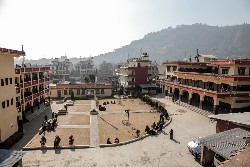Tibetet Segítő Társaság Sambhala Tibet Központ
Tibet Support Association Sambhala Tibet Center
székhely / telephely H-Budapest I. Attila út 123..
(00-36) 70 431 9343 (00-36)70 944 0260 (06-1)782 7721
sambhala@tibet.hu www.tibet.hu tibetpress.info
Facebook/Sambhala Tibet Központ Facebook/Tibett Segítő Társaság
MagnetBank/ 16200010-00110240
IBAN/HU94 16200010 00110240 00000000 SWIFT/HBWEHUHB
(1%) adószám/ 18061347-1-41
nyitva tartás/hétköznap 12.00-20.00 hétvégén előadás függő
» Retro» Tibeti művészet» Interjú» Levelek» Tibet Press» Tibet Press English» Dharma Press» Human Rights» Világ» Kína» Magyar» Ujgur» Belső-Mongólia » KőrösiCsoma» Élettér» Határozatok» Nyilatkozatok» tibeti művészet» lapszemle.hu» thetibetpost.com» eastinfo.hu» rangzen.net» ChoegyalTenzin» tibet.net» phayul.com» DalaiLama.com» vilaghelyzete.blogspot.com» Videók» Linkek» TibetiHírek» Szerkesztőség
A nyolc tibeti menekült akiket korábban Nepálban tartottak fogva elérte Dharamszalát
2018. augusztus 14./Phayul.com/TibetPress
Jelenleg csak angolul olvasható. Magyarul később.
eredeti cikk
By Tenzin Dharpo DHARAMSHALA, Aug. 14: A group of Tibetan refugees whose departure to India was earlier delayed by Nepalese immigration authorities citing “security concerns” have finally reached Dharamshala on Monday.
DHARAMSHALA, Aug. 14: A group of Tibetan refugees whose departure to India was earlier delayed by Nepalese immigration authorities citing “security concerns” have finally reached Dharamshala on Monday.
A credible source told Phayul on the condition of anonymity that eight Tibetan refugees reached Dharamshala on the morning of August 13 via Delhi. The group’s passage from Nepal was handled primarily by the ‘Tibetan reception center’, an office under the Security wing of the Dharamshala based exile Tibetan government known officially as the Central Tibetan Administration.
On July 31, The Himalaya reported, “the (Nepalese) government has stopped the process of sending eight Tibetan refugees to the Indian city of Dharamshala”. The Nepalese media also said that the immigration process was handled on the basis of an informal agreement among Nepal, India and the United Nations High Commissioner for Refugees (UNHCR) and that the Tibetan refugees would be given exit passes and would enter India via the border in Sunauli.
Phayul’s source said that the group that consisted mainly of monks and nuns of the Bon religion came from occupied Tibet’s so called TAR province.
Bon, an indigenous religion of Tibet suffered great destruction like Buddhism in the aftermath of the Chinese invasion and during the ten-year-long Cultural Revolution in Tibet from 1966 to 1976. Exile Tibetans have since rebuilt monasteries in India and Nepal with its most important monastery Pal Shenten Menriling based in Dholanji, Himachal Pradesh.
Tibetans in exile who have left Tibet to escape Chinese rule and its repressive policies are cut off from their family inside Tibet. While communication lines have opened up with micro-messaging apps such as Wechat over the last few years, physical borders linking occupied Tibet to Nepal have been more scrutinised than ever before.
The Chinese government is pushing for joint security patrols along the Nepal-China border points to further choke the route for Tibetan refugees that seek to cross into freedom from Chinese rule. In September 30, 2006 Western climbers shot a videos of Chinese border police firing at Tibetans crossing into Nepal, killing a woman.
Increasingly militarised borders and strict deportation practices, among other factors, have meant that the number of Tibetans crossing into exile has dwindled drastically over the years.
According to another source who wishes to remain anonymous, less than 50 Tibetans crossed into exile and reached Dharamshala, the exile seat of the Tibetan government in exile in the year 2017 while less than 10 have returned back to Tibet after fulfilling the extremely strict official vetting process.
